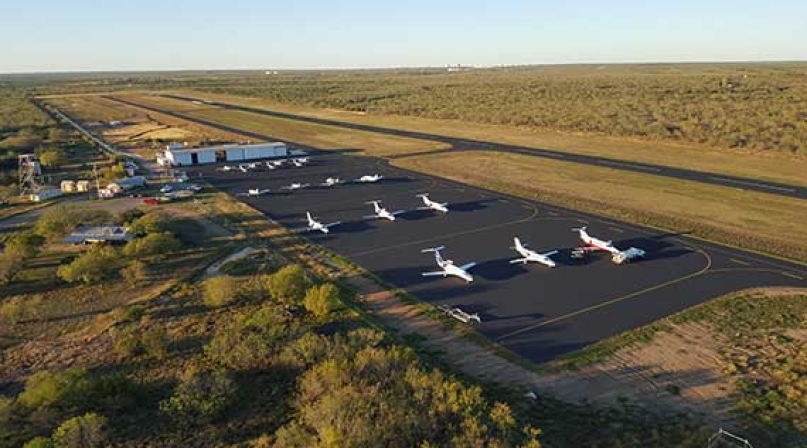House passes FAA reauthorization bill
Upcoming Events
Related News

Key Takeaways
In a triple slam, the House voted Sept. 26 on a bill to reauthorize funding for the Federal Aviation Administration (FAA), provide hurricane relief money and reform the Federal Emergency Management Agency (FEMA). The FAA bill (H.R. 302) reauthorizes FAA programs for five years. The Senate is expected to consider the bill over the next several weeks. Both chambers are expected to pass short-term extensions for the agency.
Learn More
The bill, H.R. 302, addresses several issues important to counties, including the Essential Air Service (EAS) program, drones or unmanned aerial systems (UAS), the Airport Improvement Program (AIP) and noise mitigation measures.
It also provides $1.7 billion in hurricane relief funding and includes the Disaster Recovery Reform Act of 2018, which reforms Federal Emergency Management Agency (FEMA) programs aimed to help communities prepare, respond and recover from natural disasters.
Of interest to counties:
- Passenger Facility Charges (PFC): The PFC cap will remain at $4.50, despite calls from many airports to raise the cap. Instead, the bill would require a study on charges that are added to airfare for airport construction.
- EAS: EAS would receive $155 million for FY’18 and up to $172 million in FY’23. The EAS program expands access to air travel by providing subsidies to airlines serving rural airports in small communities.
- Small Community Air Service Development Program (SCASDP): SCASDP would receive $153 million for FY’18 and up to $168 million in FY’23. The grant program is designed to help small communities address air service and airfare issues.
- AIP: AIP would receive stable funding of $3.35 billion from FY 2018 through FY 2023. AIP provides federal grants to airports for capital improvement projects.
- UAS (drones): The bill expands the use of model aircrafts by allowing operators to fly at night, beyond visual line of sight and over people. However, the bill would require model aircraft operators, including hobbyists, to pass an aeronautical knowledge and safety test. The bill directs the Government Accountability Office to study the potential role of local government regarding UAS regulations.
- Noise mitigation: The bill would require the FAA to study the potential health effects of overflight noise and consider the feasibility of amending current departure procedures for noise sensitive communities.
- Contract Tower Program: The bill would make several amendments to the Contract Tower Program, which gives private firms the ability to operate air traffic control towers and accounts for around half of the towers owned and operated by the FAA. The bill would modify the current calculations of the contract towers’ cost-benefit ratios and subsequent payments by requiring a recalculation of the annual cost-benefit ratio of towers partially supported by airports or local governments.
- Passengers' rights: The bill would ban airlines from removing passengers once they have boarded the airplane.
Highlights of the Disaster Recovery Reform Act of 2018
- Reforms FEMA and the Stafford Act by ensuring that a percentage of assistance provided in the wake of disasters is invested in pre-disaster hazard mitigation so that states, tribal and local governments can pre-empt the damage and distress that results from disasters.
- Clarifies what may be eligible for mitigation funding, making sure investments are cost effective and reduce risk.
- Speeds recovery by creating efficiencies in FEMA’s programs such as getting structures inspected faster.
- Clarifies federal programs to help expedite assistance for recipients of FEMA aid, resolve issues quickly and rebuild more efficiently.
- Provides more flexibility in meeting disaster survivors’ housing needs.
- Simplifies federal requirements for individuals and state, locals and Indian tribal governments.
- Helps communities meet the needs of pets in disasters.
- Increases transparency and oversight in the disaster assistance process.
Attachments
Related News

U.S. House of Representatives passes SPEED Act and other permitting reform bills
On December 18, the U.S. House of Representatives passed the SPEED Act (H.R. 4776). The SPEED Act would strengthen county involvement in decision-making and make needed commonsense reforms to the federal environmental review process.

Counties and Railroads: Shared Priorities for the Next Surface Transportation Bill
County leaders from across the country have a vital opportunity to ensure their infrastructure priorities are front and center.

House lawmakers introduce bipartisan legislation to support World Cup local transportation needs
On December 2, U.S. Reps. Rick Larsen (D-Wash.-02) and Burgess Owens (R-Utah-04) introduced the Transportation Assistance for Olympic and World Cup Cities Act (H.R.6348), a bipartisan effort to strengthen local transportation systems in communities preparing to host major international sporting events